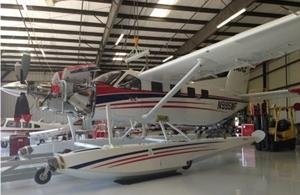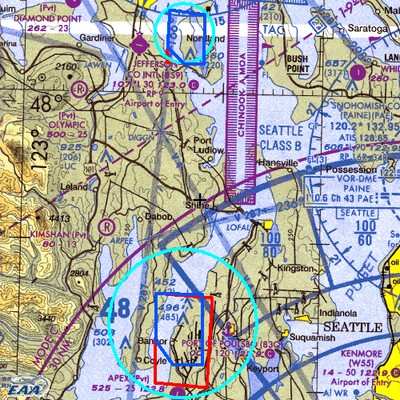An Argument for the Presumption of Innocence
The NTSB is investigating a deadly, 04 September 2022 accident in which ten people lost their lives when a 55-year-old de Havilland DHC-3 Otter crashed near Whidbey Island in Puget Sound’s Mutiny Bay. The aircraft was operated by West Isle Air.

The Airplane—a turboprop retrofitted, 1967 de Havilland DHC-3 floatplane, serial number 466, registration N725TH—departed Friday Harbor, Washington (FHR) and was enroute to Renton Municipal Airport (RNT) when witnesses report it entered a steep dive and impacted the water with force enough to disintegrate the airframe. Witnesses recalled a chaotic scene, the noisome smell of kerosine, and no survivors.
Prior to impacting the water, Northwest Seaplanes—West Isle Air’s parent company—noted the aircraft had deviated from its flight-plan-route, and attempted to contact the pilot—albeit to no avail.
The suddenness and extreme nose-down attitude at which the aircraft met the Puget Sound prompted talk of pilot suicide; however, individuals close to Jason Winters--the high-time, richly experienced, demonstrably proficient pilot at N725TH’s controls at the time of the accident--assert he was neither depressed nor inclined to suicidal ideation.
On 12 September 2022, the NTSB reported it had located N725TH’s wreckage in approximately 190-feet of water off the coast of Whidbey Island. The search for the downed aircraft—which entailed a coordinated effort between the NTSB, the National Oceanic and Atmospheric Administration (NOAA), and the University of Washington’s Applied Physics Laboratory—utilized side scan sonar, multibeam sonar, and various 3D imaging instruments.
Due to the depth and turbidity of the water and the prevailing three-to-five-knot current, searchers posit the most suitable tool with which to undertake requisite recovery operations is a work-class, underwater, Remotely Operated Vehicle (ROV). At present, the NTSB is coordinating with federal agencies and private companies for purpose of securing an ROV conducive to the proposed undertaking.
The Puget Sound aviation community has long been aware of the rate and severity at which aerospace-grade metals and aircraft components corrode in the region’s persistently wet, salty, maritime climate. What’s more, floatplane operators throughout America’s Pacific Northwest and Southern Alaska have experienced multiple instances of DHC-3 elevator servo tab linkages and elevator servo tab trailing edges corroding unto failure.
The empennage of a DHC-3 on floats is difficult to adequately assess during preflight inspection on account of its being between 10 and 11-feet tall. Ergo, structural and control assemblies critical to aircraft pitch-control often go extended periods of time without comprehensive inspection.
In Ketchikan, Alaska, on 13 July 1995, a DHC-3, registration N472PM, suffered a serious accident that substantially damaged the aircraft. The NTSB attributed the accident to failure of the airplane’s elevator servo tab, likely resultant of saltwater corrosion.

In Homer, Alaska, on 30 May 2014, the pilot of a DHC-3, registration N3125N, experienced an excessive, un-commanded nose-down pitch moment which resulted in a hard landing that substantially damaged the aircraft. A postflight inspection revealed wear and corrosion of both the aircraft’s elevator servo tab and the spar structure within its right elevator assembly.
In Yakutat, Alaska, on 24 May 2022, a DHC-3, registration N703TH sustained substantial damage and its four occupants were seriously injured when the aircraft experienced a series of un-commanded, nose-up pitching moments, the last of which caused the aircraft to stall and impact the ground at a 45° nose-down pitch attitude.
Whether or not Jason Winters took his own life and the lives of his passengers will likely not be known for at least two-years—if at all. An objective review of the NTSB’s own records, however, suggests an alternate narrative, and richly entitles Mr. Winters to suspension of judgment and the presumption of innocence.
 ANN's Daily Aero-Linx (12.03.25)
ANN's Daily Aero-Linx (12.03.25) ANN's Daily Aero-Term (12.03.25): CrewMember (UAS)
ANN's Daily Aero-Term (12.03.25): CrewMember (UAS) NTSB Prelim: Maule M-7-235A
NTSB Prelim: Maule M-7-235A Airborne-Flight Training 12.04.25: Ldg Fee Danger, Av Mental Health, PC-7 MKX
Airborne-Flight Training 12.04.25: Ldg Fee Danger, Av Mental Health, PC-7 MKX Aero-News: Quote of the Day (12.04.25)
Aero-News: Quote of the Day (12.04.25)




